I was recovering from surgery for a detached retina in my right eye. Here’s what I found.
Flashes and floaters
24 hours after the surgery I experienced floaters and flashes in my right eye, I was on the phone with an eye doctor. When I saw the first flash of light in my peripheral vision, I had thought, “That was strange. Was that the reflection from a car whizzing past?” The second time, I knew something was wrong.
The doctor said that I had lattice degeneration. This is a thinning of the peripheral retina, the tissue that lines the back wall of the eye. This also helps maintain sharp vision. Lattice degeneration is a cause for concern. Here, the retina is more susceptible to tearing, which can lead to retinal detachment. The doctor made an appointment for five more weeks.
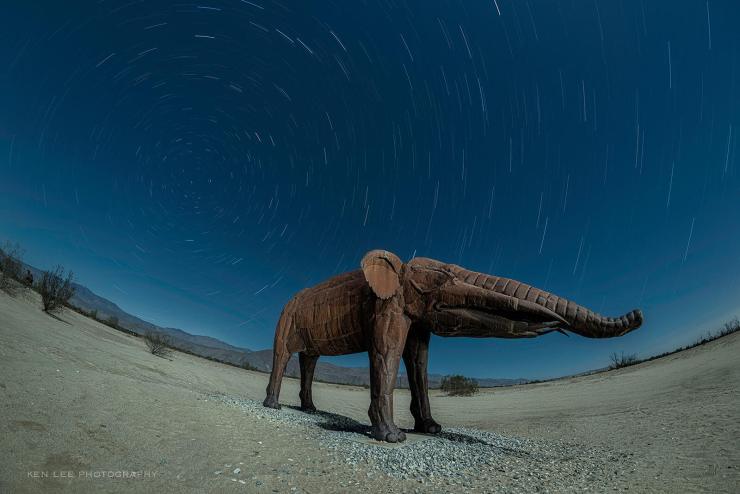
Distracting
The next time I went out to the Arizona desert to photograph at night, my vision had grown increasingly worse. The flashes and floaters were more prominent than ever before. Worse than that, my vision in the right eye had grown a little hazier.
The squeaky wheel
I called the doctor again. I wanted to see him now, not in several more weeks. However, the receptionist said that he was out of town. I kept the old appointment. However, thinking it over, I felt I really should see a doctor, so I called again. Same message. So I called again, saying the same thing again. This time, I got an appointment with a different doctor the following morning. Sometimes, the third time really is the charm.
Uh, oh!
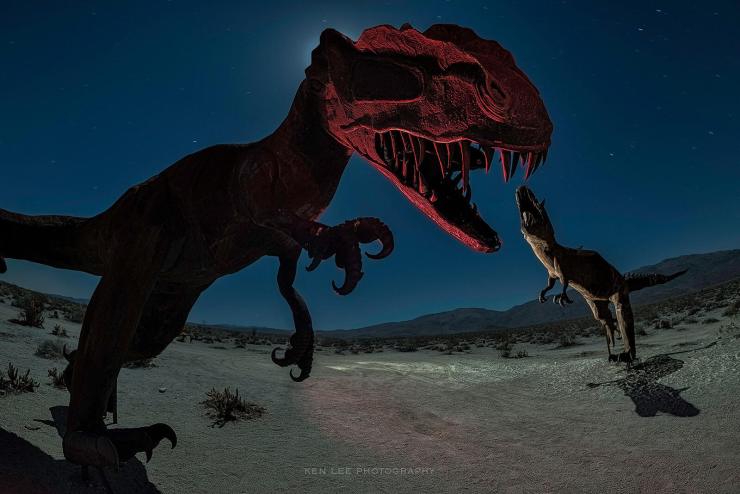
It didn’t take long. The doctor said, “You have a detached retina.” He explained that since I was nearsighted, I was more susceptible to lattice degeneration and detached retinas. Swell. He made an appointment with another doctor specializing in retinal surgery. In particular, pneumatic retinopexy and a scleral buckle surgery, would be done during the same visit.
Recovery
Recovery involved staying face down for eight days all day and all night. Yes, that means while sleeping. Or attempting to sleep. I am very active and kinetic. Therefore, I was convinced this was one of the Seven Layers of Hell. My face hurt. My back hurt. And of course, my eye hurt. And with that, I also had headaches for the next three weeks. I rarely looked at myself in the mirror for the first few days. I looked like I had gone 15 rounds with Mike Tyson.
The blob
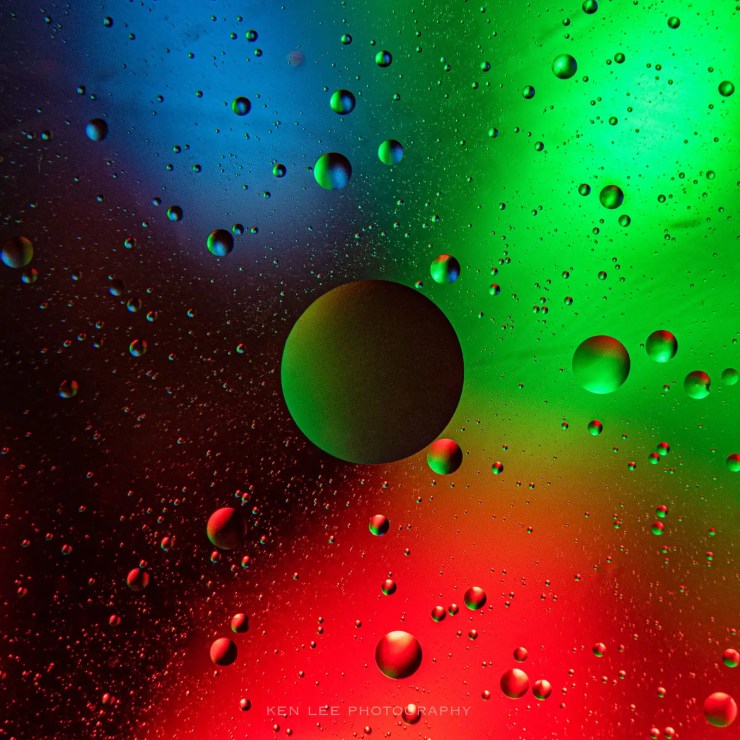
I had a weird bubble in my eye from one of the procedures. This air bubble slowly pushes the retina back into place. However, to me, it looked like an enormous blob. Slowly over two weeks, the blob diminished, then broke into several smaller blobs, then went away completely. I was overjoyed when it went away.

Choosing the location to do night photography
A month after surgery, I was ready to get outside and enjoy some night photography in the desert. I chose Borrego Springs. One of the reasons was that the magnificent sculptures that I was going to photograph were only between five to 10 minutes from the motel. The other reason was that the ground near the sculptures was level and didn’t have many sharp pointy plants.
And of course, I love Borrego Springs. Borrego Springs was where I had floated in the pool while looking up at the Milky Way, a magical experience I still remember vividly.
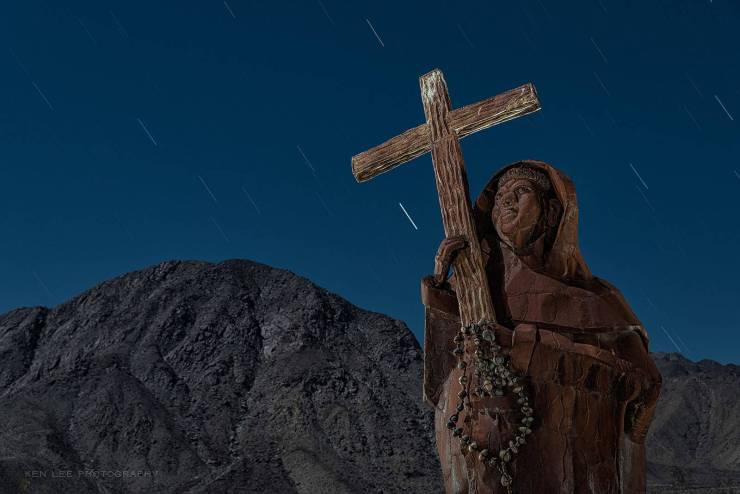
Other strategies for doing night photography
While my right eye was healing quite well and I was told I could drive, swim, and exercise, my vision was still blurry. To compensate for this, I began using reading glasses. Rather than fumble around in the dark for them, I purchased eyeglass straps so they could hang around my neck when I wasn’t using them.
I also used a Coast HX4 80-lumen Clip Light with the red light on to see my way around. Surprisingly, I didn’t need this too much because it was during a full moon, and I could see reasonably well.
When reviewing my photos, I blew them up more than I usually would just to make sure I had focused properly. I used my reading glasses to make absolutely sure. I often used Live View. With Live View, I found I could also use my reading glasses effectively. If I needed to, I could also shine my light around to see what was going on more.
I also used the autofocus in my camera. I shined a light on the sculpture I was photographing, used the autofocus, and then switched back to manual focus so the camera wouldn’t keep attempting to acquire focus again.
Other thoughts
I was rather pleased that I could photograph so easily in the dark, even with one eye having rather blurry vision. I was able to photograph again the following month as well. I again photographed during a full moon, photographing some unusual art installations in Wonder Valley. And this time, I had also gotten some specially made glasses from the optometrist, so driving at night was much better. I was very specific with what I wanted with the glasses, and they made them with this in mind.
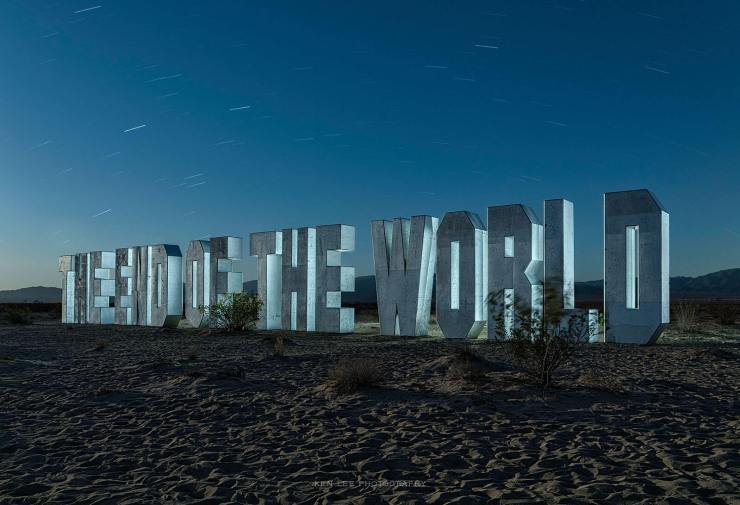
I found that one of the challenges was the extremes between bright lights and dark. If it were mostly dark, I didn’t have that many issues at all. But if there were large bright signs and storefronts in an otherwise very dark environment, that sometimes caused haziness. My new glasses corrected for this. I didn’t have them when I photographed in Borrego Springs, so that’s largely why I chose to photograph a location that was only minutes from the motel.
Technically, my eye has not recovered fully. That takes about six months after surgery. Shortly after that point, I will have cataract surgery. After that, my vision in my right eye should be considerably sharper, and not the blurry mess it is now.
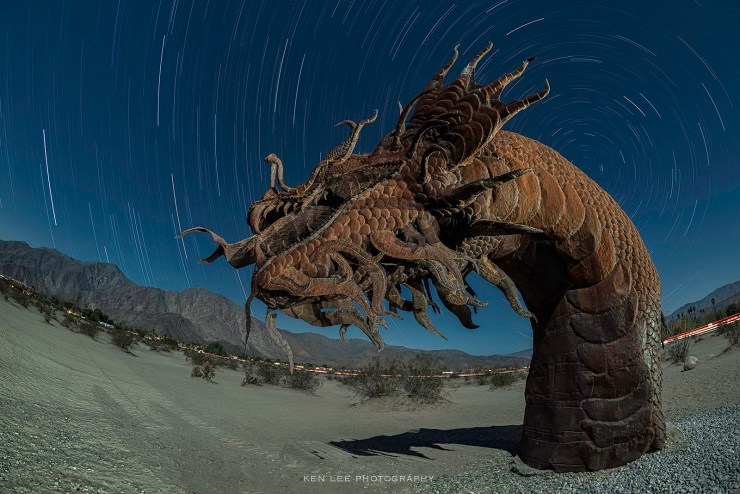
And yes, I did swim at night. While the Milky Way wasn’t arching over the sky, the full moon and the starry skies were. And that’s still magical. And I felt particularly joyous after spending such a long time staying face down in the house.
Tell your story with the second annual Visual Storytelling Conference!
Experience four days of interactive, online training sessions featuring a range of educational content with experienced photographers and content creators. This free event kicks off with a series of technical boot camps to build essential skills, followed by live, online sessions on photography, video, business and social media. Join live from March 10-13, 2022!
